
Simon the Sorcerer is a 1993 point-and-click adventure game developed and published by Adventure Soft, for Amiga and MS-DOS. The game's story focuses on a boy named Simon who is transported into a parallel universe of magic and monsters, where he embarks on a mission to become a wizard and rescue another from an evil sorcerer. The game's setting was inspired by the novels of the Discworld series, and incorporates parodies on fantasy novels and fairy tales, such as The Lord of the Rings and Jack and the Beanstalk. The lead character's design was inspired by that of the fictional British television character Blackadder, with the character voiced by Chris Barrie in the CD re-release.

Indiana Jones and the Last Crusade: The Graphic Adventure is a graphic adventure game, released in 1989 by Lucasfilm Games, coinciding with the release of the film of the same name. It was the third game to use the SCUMM engine.
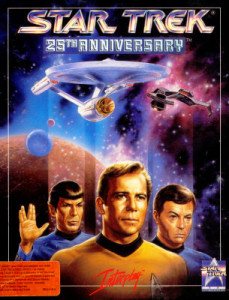
Star Trek: 25th Anniversary is an adventure video game developed and published by Interplay Productions in 1992, based on the Star Trek universe. The game chronicles various missions of James T. Kirk and his crew of the USS Enterprise. Its 1993 sequel, Star Trek: Judgment Rites, continues and concludes this two-game series.

Gobliiins is a puzzle adventure video game series, consisting of five entries, released by Coktel Vision for the Amiga, Atari ST, DOS, and Macintosh platforms. The first three titles were released in the early 1990s, the fourth in 2009. The visual look of the series and its characters were created by French artist Pierre Gilhodes, whose style was used in another game from Coktel Vision: Woodruff and the Schnibble of Azimuth.
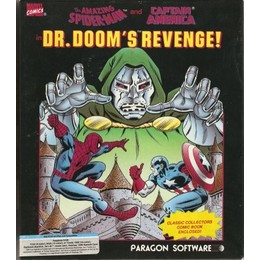
The Amazing Spider-Man and Captain America in Dr. Doom's Revenge! is a side-scrolling video game starring Marvel Comics' superheroes Spider-Man and Captain America battling a host of supervillains led by Doctor Doom. The player alternately controls Spider-Man and Captain America; the character being controlled switches after each battle.

The Colonel's Bequest is a character-driven graphic adventure game by Sierra On-Line featuring the character of Laura Bow. It was developed for MS-DOS in 1989. Ports for Amiga and Atari ST were released in 1990. It was the first of the short-lived Laura Bow Mysteries series created by Roberta Williams, which used many elements from the game Mystery House. The Colonel's Bequest was created with SCI0, and employed 4-bit color and a typing interface. Its sequel The Dagger of Amon Ra was released in 1992.

Dune is a 1992 adventure strategy game based on the 1965 novel of the same name by Frank Herbert. It was developed by Cryo Interactive and published by Virgin Interactive.
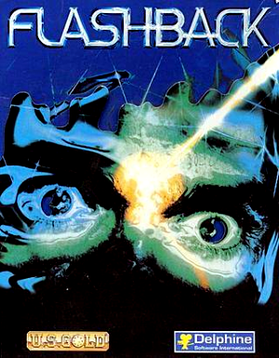
Flashback, released as Flashback: The Quest for Identity in the United States, is a 1992 science fiction cinematic platform game developed by Delphine Software of France and published by U.S. Gold in the United States and Europe, and Sunsoft in Japan.

Conquests of Camelot: The Search for the Grail is a graphic adventure game released in 1990 by Sierra On-Line. It was the first game in the Conquests series designed by Christy Marx and her husband Peter Ledger. The only other game in the series was 1991's Conquests of the Longbow: The Legend of Robin Hood. Marx did the majority of the design work while Ledger created the game and package art.

Conquests of the Longbow: The Legend of Robin Hood is a graphic adventure game designed by Christy Marx and published by Sierra On-Line in 1991. It is the second and final part of the Conquests series, which begins with Conquests of Camelot: The Search for the Grail. It features VGA graphics and Sierra's standard icon-driven interface first seen in King's Quest V.

The Pawn is an interactive fiction game for the Sinclair QL written by Rob Steggles of Magnetic Scrolls and published by Sinclair Research in 1985. In 1986, graphics were added and the game was released for additional home computers by Rainbird.
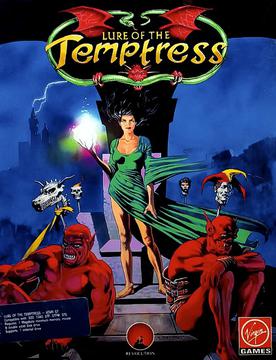
Lure of the Temptress is a point-and-click adventure game published by Virgin Interactive Entertainment in June 1992 for Atari ST, MS-DOS, and Amiga. It was the first game developed by Revolution Software and uses their proprietary Virtual Theatre engine. The player assumes the role of Diermot, a young peasant who has to overthrow an evil sorceress. The game was well-received and re-released as freeware on April 1, 2003.

King's Quest VI: Heir Today, Gone Tomorrow is a point-and-click adventure game, first released in 1992 as the sixth installment in the King's Quest series produced by Sierra On-Line. Written by Roberta Williams and Jane Jensen, King's Quest VI is widely recognized as the high point in the series for its landmark 3D graphic introduction movie and professional voice acting. King's Quest VI was programmed in Sierra's Creative Interpreter and was the last King's Quest game to be released on floppy disk. A CD-ROM version of the game was released in 1993, including more character voices, a slightly different opening movie and more detailed artwork and animation.

Rise of the Dragon, released in 1990 by Dynamix, marks the company's venture into the cyberpunk genre, distinct from its usual portfolio of action and flight simulators. This graphic adventure game is set in a future dystopian version of Los Angeles, circa 2053, and follows the story of detective William 'Blade' Hunter as he investigates the death of the mayor's daughter, linked to a dangerous new drug, MTZ. The gameplay combines detective work, strategy, and action. Players must solve puzzles that influence the storyline, interact with characters who remember past choices, and tackle action sequences. If players fail these sequences multiple times, the game may offer to automatically complete them.

Dark Seed is a psychological horror point-and-click adventure game developed and published by Cyberdreams in 1992. It exhibits a normal world and a dark world counterpart, which is based on artwork by H. R. Giger. It was one of the first point-and-click adventure games to use high-resolution graphics, to Giger's demand. A sequel, Dark Seed II, was released in 1995.

There have been several video games based on the 1991 film Hook. A side-scrolling platform game for the Nintendo Entertainment System (NES) and Game Boy was released in the United States in February 1992. Subsequent side-scrolling platform games were released for the Commodore 64 and the Super Nintendo Entertainment System (SNES), and an arcade beat ‘em up by Irem later in 1992, followed by versions for the Sega CD, Sega Genesis, and Sega's handheld Game Gear console in 1993.

Curse of Enchantia is a graphic adventure game developed and released by the British video game company Core Design for MS-DOS and the Amiga in 1992. The game tells the comic fantasy story of Brad, a teenage boy from modern Earth who was magically abducted to the world of Enchantia by an evil witch-queen. He needs to escape and find a way back to his own dimension.
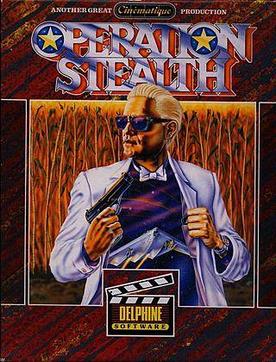
Operation Stealth, also known as James Bond 007: The Stealth Affair in the United States, is an adventure game from Delphine Software International, released in 1990. The game is mainly the work of Paul Cuisset (programming) and Jean Baudlot (sound).

Mean Streets is a graphic adventure game developed and published by Access Software for MS-DOS in 1989 exclusively in North America. It was ported to the Commodore 64, Atari ST, and Amiga in 1989 and 1990 by The Code Monkeys. Atari ST and Amiga ports were only released in Europe. The game, set in a dystopian cyberpunk neo-noir world, is the first in the series of Tex Murphy mysteries; its immediate sequel is Martian Memorandum. In 1998, Mean Streets was remade as Tex Murphy: Overseer.

Nightlong: Union City Conspiracy is a cyberpunk-themed adventure game developed by Trecision and Team17 and published by MicroProse in Europe and DreamCatcher Interactive in North America. It was later ported to the Amiga by ClickBOOM.



















